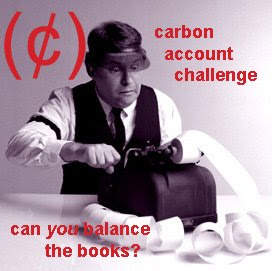Switching From Incandescents to Compact Fluorescent Light bulbs
It's funny how so many things, on the surface, seem so obviously eco-friendly but upon further inspection, turn out to be questionable. Take for instance, the Incandescent Bulb vs. the CFL. Everyone and I mean EVERYONE touts the energy-efficiency of CFL's. By God, if we would all just switch one measly bulb from an incandescent to a CFL it would save the universe. Really? Would it?
There is a down side to CFLs that most folks don't know about. CFLs contain approximately 4mg - 5 mg of mercury per bulb. Mercury can cause many problems when inhaled, and can affect our brains, spinal cords, kidneys and livers. Due to their toxic nature, CFL's require special handling. To dispose of them properly you need to seal them in a plastic bag and take them to a recycler that handles hazardous household waste. If recycling is not possible, then you should seal the bulb in a plastic bag and place it in with the regular trash. So for every bulb that dies, you need to enshrine it forever in plastic and hope that the plastic doesn't break and release the mercury -- that doesn't sound good for the environment, does it?
As I've posted before, I really have no clue what is the right thing to do. I'd love to switch all my bulbs to LED lightbulbs, which are energy efficent and mercury-free, but who can afford a $75 bulb? Not I.
However, since this blog is all about the changes I'm making (whether right or wrong), I should tell you that I have been switching to CFLs. In fact, I've been switching bulbs for almost a year now. It started as a way to save money on the electric bill, but is now more about the energy savings. I currently have installed in my house: 16 CFL bulbs; 30 regular bulbs; and 21 "odd" bulbs (those little candelabra ones, the big globe ones, some flood lights, etc.). As each regular bulb burns out, it is replaced with a CFL.
Am I doing the right thing? I've no clue. It all depends on whose research you read. On the one hand, they definitely save electricity, but if my energy comes from a renewable source, does that even matter? I've already broken one bulb and it freaked me out -- thinking about mercury vapors floating around in my house. I guess there is no perfect solution. If we want to be able to see at night and we're not willing to light candles to do so, we have to choose the best option we can afford.
I've never claimed to have all the answers. Hell, half the time I don't even understand the question. But you do the best you have with information you've got. Kind of like life in general.
Savings:
Each regular lightbulb is 60 watts. The replacement CFLs are 18 watts. For each bulb changed, I save 42 watts. Assuming each light is on an average of 2 hours per day, that's over 30 kWh saved per bulb, per year. I've already switched 16 bulbs, so I guess I'm already saving 490 kWh. When I finish converting all 46 bulbs, I'll be saving 1410 kWh each year, compared to incandescent bulbs. Pretty substantial stuff.
Difficulty Level: 2 out of 5
The hardest part of this task is deciding whether it is, indeed, the best environmental choice. I'm still not 100% convinced, but I'm obviously a little convinced, because I'm doing it. So I guess once you decide if it's the right choice for you, then it's as easy as changing a light bulb. (Even in the dim light, you had to see that one coming...)
Friday, September 28, 2007
Day Eighty-Two - Another Bright Idea
Subscribe to:
Post Comments (Atom)









3 comments:
Hi Erin,
I was told by a guy who usually knows what he's talking about that you can return your used CFL's to the store where you bought them without wrapping them in plastic and the store will recycle them for you. You might want to check this out.
Thanks for the tip, Aunt Anita! I'll check at the Home Depot the next time I'm there and let you know what they say! :-)
Saw this and thought it'd be helpful stored here: http://www.care2.com/greenliving/love-your-light-bulbs-easy-greening.html
Post a Comment